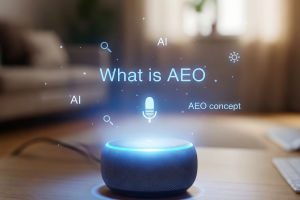As AI tools rapidly enter our daily lives—from language apps to virtual tutors—it's natural for us to wonder: Will teachers eventually be replaced?
With all the headlines about machines writing essays, grading homework, and even answering students' questions, the future might feel uncertain for many educators.
But instead of fearing the worst, maybe it's time for us to take a closer look at what AI can and can't do in the world of education. Let's explore the real impact of AI in the classroom and what it means for teachers and students alike.
What Can AI Actually Do in Classrooms?
First, let's talk about what AI is already doing in education. We've probably seen various AI tools that recommend what to study next. These systems are great at:
• Giving quick answers to factual questions
• Helping students practice topics like math or grammar
• Providing automatic feedback or grading simple tests
• Recommending personalized learning paths based on progress
These abilities are changing how we learn. For instance, if a student is struggling with fractions, an AI tutor can instantly offer extra exercises and explanations. If a teacher is overwhelmed with grading, an AI tool can help speed up the process.
But here's the catch: AI only works well when the problems are clear-cut and the answers are predictable. It can't handle complex discussions, emotional needs, or creative thinking the way a real teacher can.
Why Teachers Are Still Irreplaceable
While AI can support learning, it still lacks something very important—human connection. Teaching is about more than just delivering information. It's about building trust, understanding emotions, and inspiring curiosity.
Think about when we were kids. Didn't we all have at least one teacher who made a big difference in our lives? Maybe they encouraged us when we were unsure, or made a boring subject suddenly feel exciting. No matter how advanced AI becomes, it simply can't match that kind of personal encouragement or empathy.
Teachers also adjust their approach based on subtle signals—like a confused look, a shy question, or the mood of the class. These are things no algorithm can truly understand. So while AI can assist with the "what" of teaching (the content), only humans can handle the "how" and "why"—the parts that shape young minds.
How AI and Teachers Can Work Together
Instead of replacing teachers, AI can actually become a powerful assistant. Imagine this:
• AI handles repetitive tasks like quiz grading or lesson planning suggestions
• Teachers focus more on discussion, creativity, and personalized support
• Students get extra help outside class through AI tools, letting teachers use class time more meaningfully
In this way, AI frees up teachers to do the most human part of their job: connecting, coaching, and inspiring. Rather than being pushed aside, teachers become even more valuable in guiding students through a more personalized and tech-supported journey.
The New Skills Teachers Need
As AI becomes more common in schools, we'll need to grow with it. Teachers don't have to become programmers, but it helps to learn:
• How to use AI tools wisely and ethically
• How to teach students to use AI without depending on it
• How to guide critical thinking in an age of machine-generated content
We'll also need to help students understand when to trust AI and when to think for themselves. Just because a tool gives a fast answer doesn't mean it's the best one. Teachers will become essential guides in helping students think deeper, not just faster.
Conclusion: The Future Is Human + Machine
So, will AI take over our classrooms? Not likely. What's more realistic—and exciting—is that AI will change the way we teach and learn, but teachers will remain at the heart of education.
We should see AI as a helpful partner, not a competitor. It can take care of tasks, but it can't replace the passion, care, and wisdom that only a real teacher brings.
Let's look ahead with confidence: if we embrace the strengths of both humans and machines, we can build classrooms that are smarter, more caring, and ready for the future. What do you think—are you ready to be part of this change?


